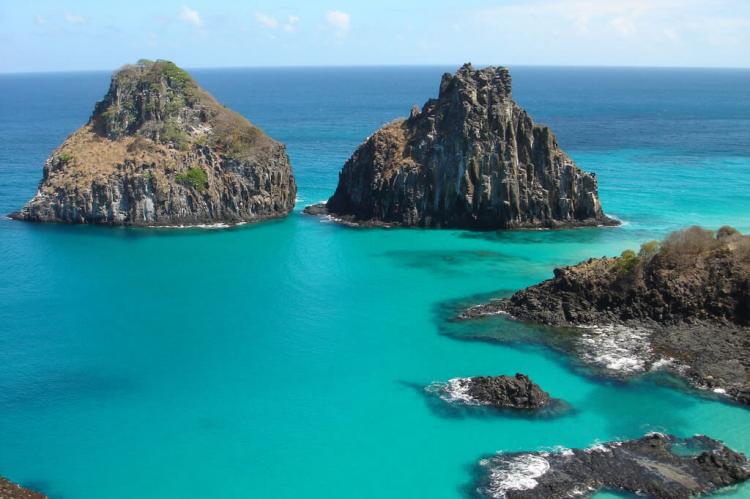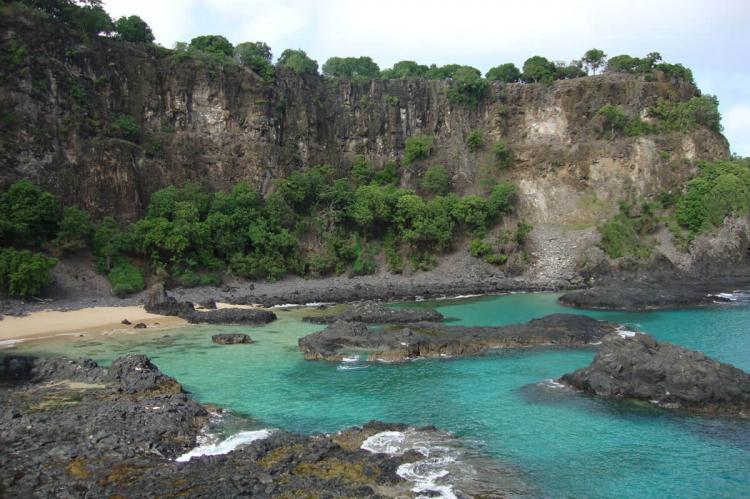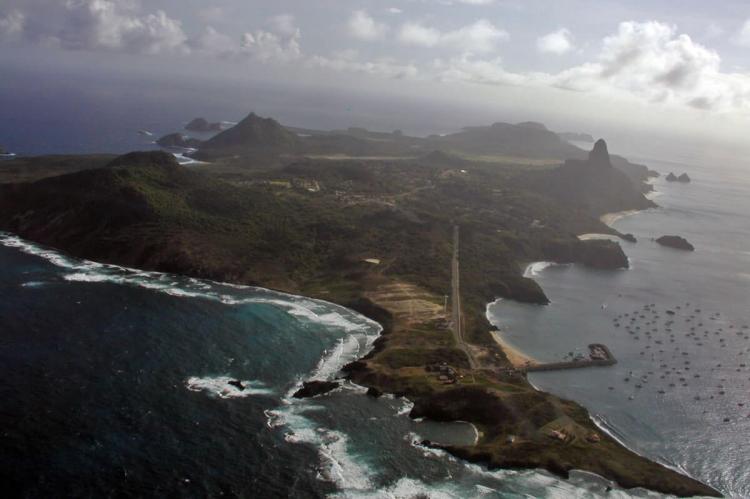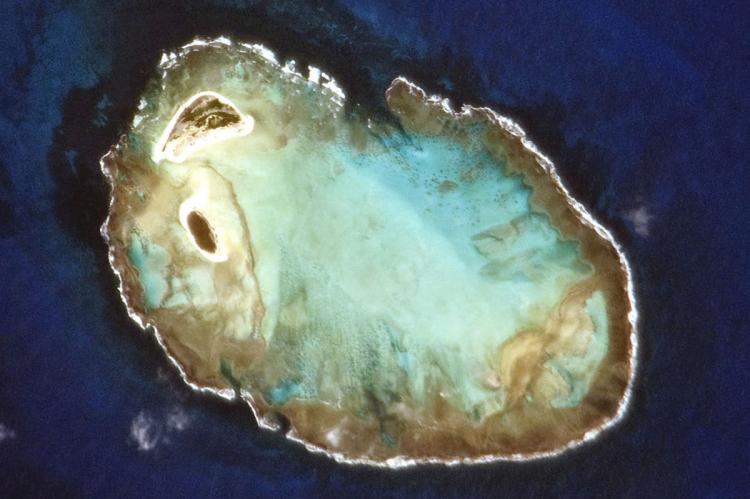Brazilian Atlantic Islands: Fernando de Noronha and Atol das Rocas Reserves (Brazil)
Brazilian Atlantic Islands: Fernando de Noronha and Atol das Rocas Reserves consist of a Marine National Park and a Biological Reserve off the coast of Brazil. These protected areas are home to many tropical seabirds, and the waters are substantial breeding and feeding grounds.
Brazilian Atlantic Islands: Fernando de Noronha and Atol das Rocas Reserves
The Brazilian Atlantic Islands: Fernando de Noronha and Atol das Rocas Reserves consist of the Fernando de Noronha Marine National Park and the Atol das Rocas Biological Reserve, off the coast of Brazil and inscribed as a UNESCO World Heritage Site in 2001.
With these two protected areas, the World Heritage site covers an area of 42,270 ha (104,450 acres) and a buffer zone of 140,713 ha (347,700 acres).
The islands of the Fernando de Noronha archipelago are home to the largest concentration of tropical seabirds in the Western Atlantic. In addition, they include the only examples of the Insular Atlantic Forest and the only oceanic mangrove in the South Atlantic.
Dolphin Bay (Baía dos Golfinhos) hosts a unique population of resident dolphins. At low tide, Rocas Atoll provides a spectacular seascape of lagoons and tidal pools teeming with fish and a great variety of shellfish, sponges, mollusks, corals, etc.
Peaks of the Southern Atlantic submarine ridge form the Fernando de Noronha Archipelago and Rocas Atoll off the coast of Brazil. Nearly 70% of the main island of Fernando de Noronha, 21 smaller islands and islets of the archipelago, and most adjacent waters to a depth of 50 m (164 ft) are part of the protected area.
The Brazilian Atlantic Islands represent a large proportion of the island surface of the South Atlantic. Their rich waters are essential for the breeding and feeding of tuna, sharks, turtles, and marine mammals.
At the heart of a vast ocean surface, the Brazilian Atlantic Islands form an oasis of fertile waters, which are significant breeding and living places for tuna, shark, turtle, and marine mammals and play a crucial role in the natural fish restocking of the region.
Two species of sea turtle breed on these islands: the hawksbill and green turtle, for which the Rocas Atoll is considered Brazil's second most important breeding site.
Fernando de Noronha Marine National Park
Fernando de Noronha Marine National Park is about 340 km (211 mi) off the Brazilian coast. Of indescribable beauty, it is formed by volcanic peaks of a submerged mountain chain.
The Fernando de Noronha Environmental Protection Area covers the urban part of the island of Fernando de Noronha, while the Fernando de Noronha National Park covers the rest. The area includes a large marine extension to Saint Peter and Saint Paul Archipelago, also in the National Park.
Protected birds in the park include Noronha Elaenia (Elaenia ridleyana), red-billed tropicbird (Phaethon aethereus), white-tailed tropicbird (Phaethon lepturus), Audubon's shearwater (Puffinus lherminieri), Noronha vireo (Vireo gracilirostris).
Other protected species in the park include the crabs Johngarthia lagostoma and Percnon gibbesi, the loggerhead sea turtle (Caretta caretta), the green sea turtle (Chelonia mydas), the hawksbill sea turtle (Eretmochelys imbricata), olive ridley sea turtle (Lepidochelys olivacea), the lemon shark (Negaprion brevirostris), the starfish Echinaster (Othilia) guyanensis, the slate pencil urchin (Eucidaris tribuloides), the sea ginger coral (Millepora alcicornis) and the coral Phyllogorgia dilatata.
Atol das Rocas Biological Reserve
The Atol das Rocas Biological Reserve, the only atoll in the South Atlantic, is located about 150 km (93 mi) west of Fernando de Noronha. It is an elliptical reef including two small islands surrounded by a marine reserve.
The Rocas Atoll is 266 km (165 mi) northeast of the coast of Natal, Rio Grande do Norte, in northeast Brazil and is the only atoll in the Southwestern Atlantic. The coral atoll is built on the upper, western part of the flat top of a volcanic seamount on the northeast part of the Brazilian continental margin.
Protected species include the loggerhead sea turtle (Caretta caretta), hawksbill sea turtle (Eretmochelys imbricata), green sea turtle (Chelonia mydas), red-billed tropicbird (Phaethon aethereus), white-tailed tropicbird (Phaethon lepturus), the crabs Johngarthia lagostoma and Percnon gibbesi, the starfish Echinaster (Othilia) guyanensis, lemon shark (Negaprion brevirostris), sea ginger (Millepora alcicornis) and the coral Phyllogorgia dilatata.





